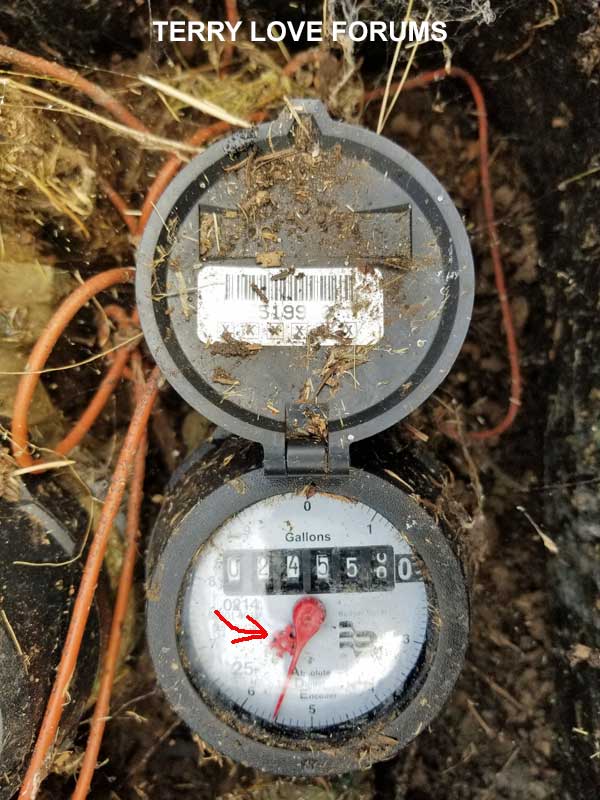7474
Member
- Messages
- 43
- Reaction score
- 4
- Points
- 8
Have a question regarding my water meter.
For example, middle of the night no water activity throughout the house, triangle on the meter is perfectly still.
Flush the toilet, triangle on the meter begins to spin, toilet fills and toilet valve shuts off, however triangle on the meter continues to spin well after the toilet has filled and the toilet valve has closed.
This scenario is applicable to any water usage in the home. Water meter will be completely still prior to any use and then it continues to run after the faucet has been turned off or the toilet valve has shut off.
Not sure if it’s always done this but I most recently noticed it after we had our hot water tank and expansion tank replaced.
Any insight would be greatly appreciated.
Thank you much.

For example, middle of the night no water activity throughout the house, triangle on the meter is perfectly still.
Flush the toilet, triangle on the meter begins to spin, toilet fills and toilet valve shuts off, however triangle on the meter continues to spin well after the toilet has filled and the toilet valve has closed.
This scenario is applicable to any water usage in the home. Water meter will be completely still prior to any use and then it continues to run after the faucet has been turned off or the toilet valve has shut off.
Not sure if it’s always done this but I most recently noticed it after we had our hot water tank and expansion tank replaced.
Any insight would be greatly appreciated.
Thank you much.

Last edited by a moderator:
